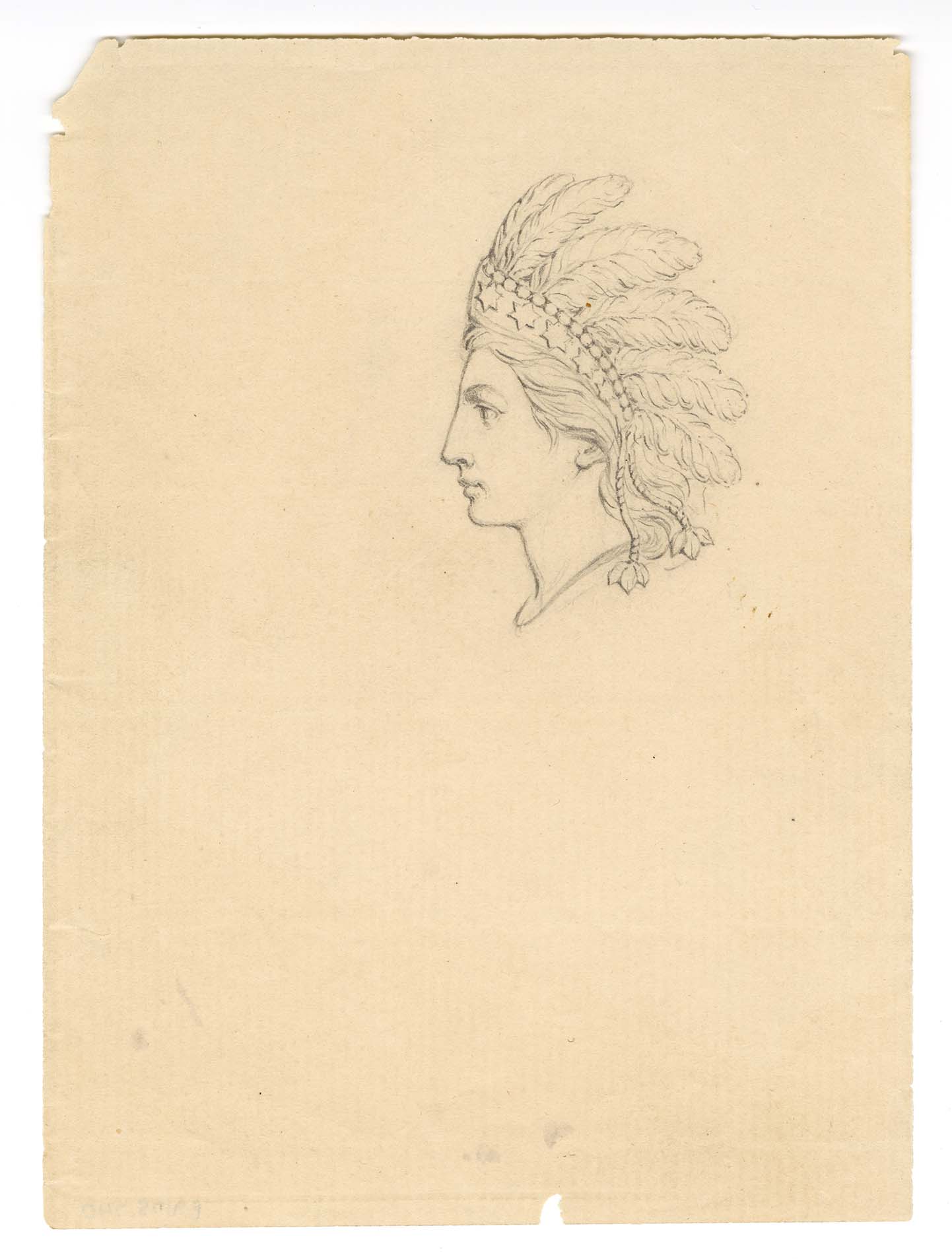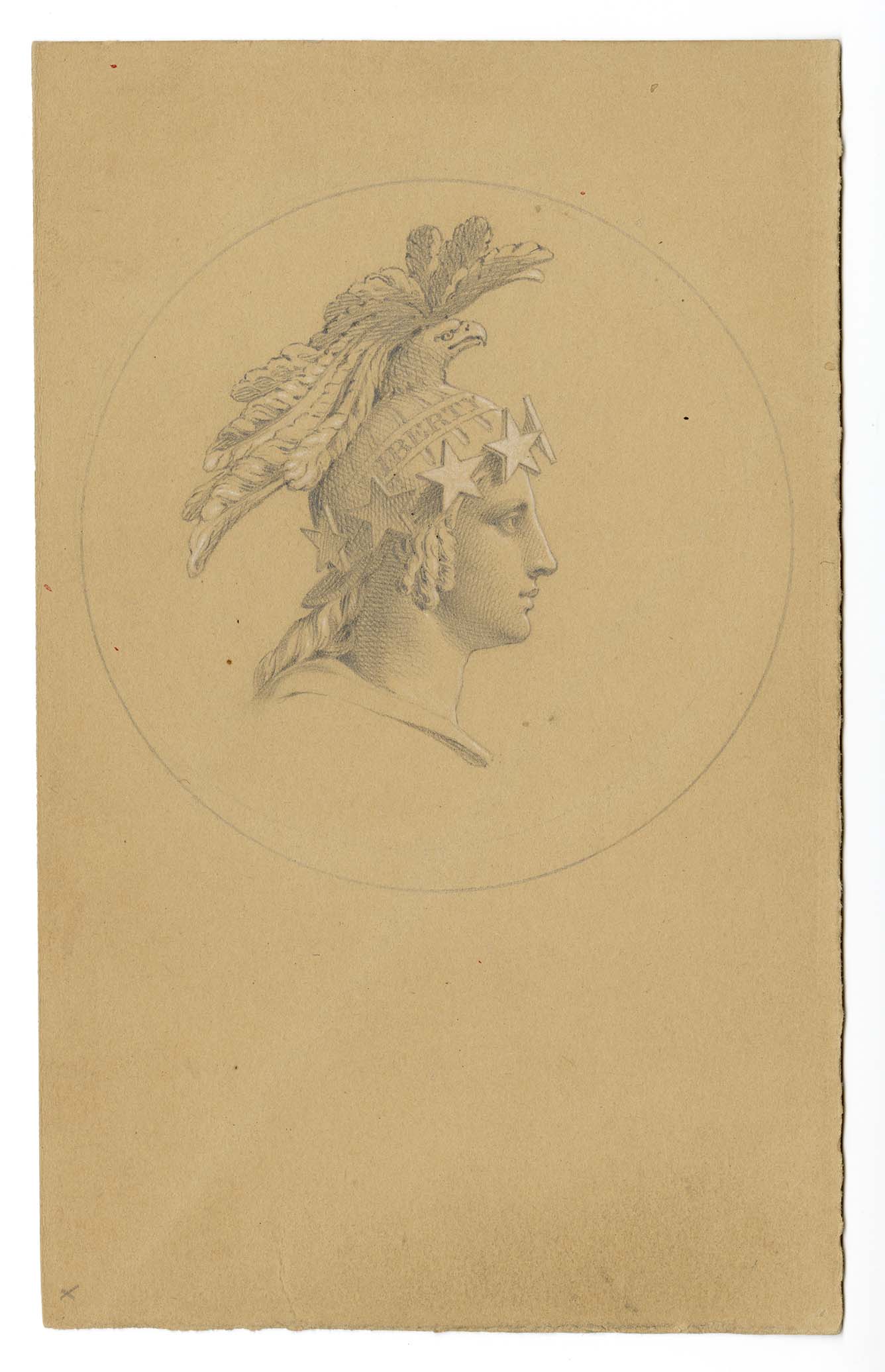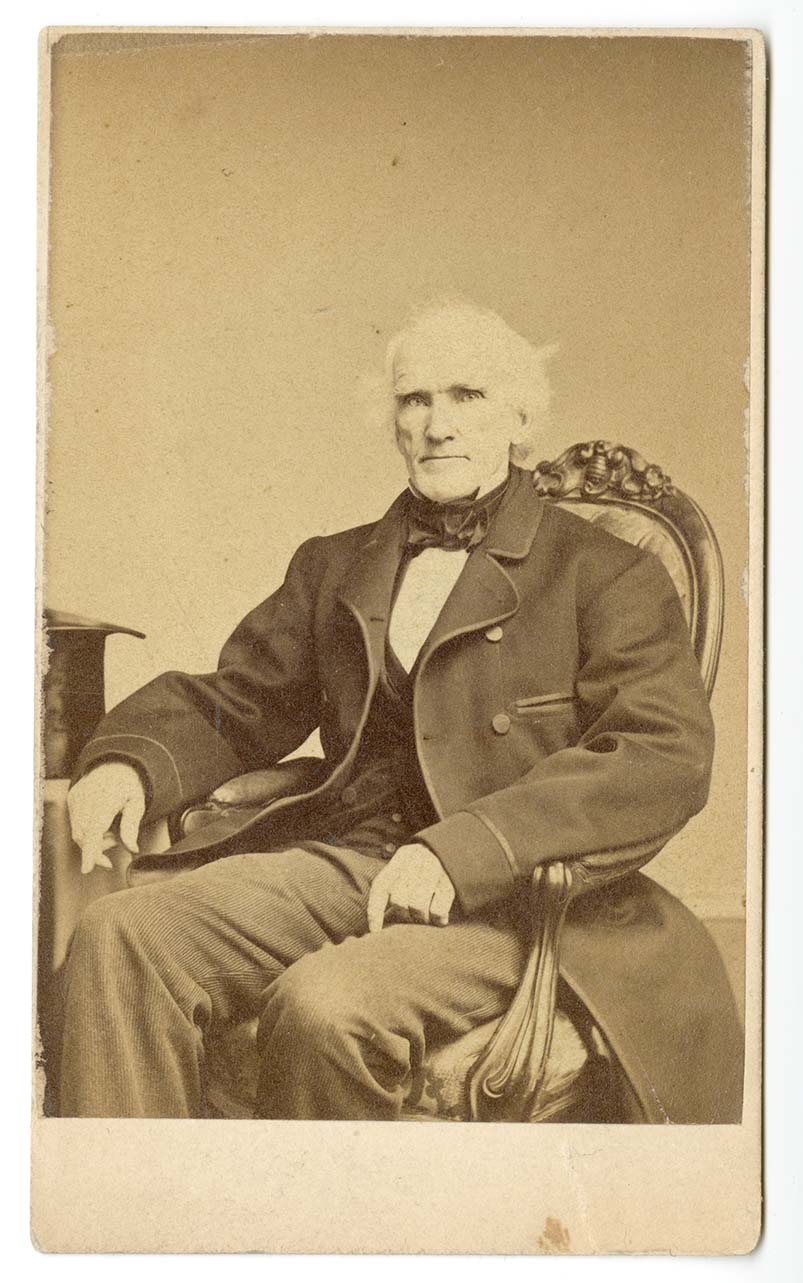James Barton Longacre, Coin design study of reverse of 1853 three-dollar coin (1853). Pencil drawing.
Here is Longacre’s beautiful drawing of the design for the reverse of the three-dollar coin from 1853. If you look closely, you’ll notice wheat, corn, tobacco, and cotton. These crops are meant to represent the North and the South interwoven together to form a wreath. If you compare this image with the hub trial, you are able to see some of the limitations in the detail represented on a struck coin.
James Barton Longacre, Three-dollar hub trial (1854). Hub trial in white metal. Photograph courtesy of Tom Mulvaney.
A hub trial is a mirror image copy of a die in relief which is used to make carbon copy dies. This three-dollar hub trial is a perfect example of Longacre’s work that incorporates significant crops of America at the time, such as tobacco and cotton. This wreath configuration was later used on the reverse of the Flying Eagle cent in 1856 and on the dime beginning in 1860. It was also one of the final lasting coinage designs of Longacre, continuing with modifications through 1916.
James Barton Longacre, Coin design study of head of Liberty (ca. 1853-1869). Pencil drawing.
A captivating interpretation, this is the predecessor design to the one of Lady Liberty wearing a Native American headdress that is found on the Indian Head cent that was struck 1859-1909. Longacre defended the concept of this design to James Snowden (1809-1878), the Director of the Mint at the time. He wrote an impassioned letter dated August 21, 1858, in which he explained that we should embrace the symbols of this land. He noted that the design of a Native American headdress upon the head of Liberty combines the elements of the indigenous people from this continent with the American symbol of Lady Liberty.
James Barton Longacre, Half-dollar die trial (ca. 1853-1869). Die trial in white metal. Photograph courtesy of Tom Mulvaney.
The die trial of this half dollar represents a design that was ultimately not used. The wreath upon the head of Lady Liberty, which resembles elements of the wreath seen in the three-dollar coin, shows Longacre repurposed his designs as part of his creative process.
James Barton Longacre, Coin design study of head of Liberty (ca. 1853-1869). Pencil drawing.
Another version of the Liberty head, although not used on any coins, is this stunning example that incorporates iconic patriotic imagery. The bald eagle wears a headdress of feathers, which is itself a part of the headwear adorning Lady Liberty. The helmet also includes stars that most likely represent the original thirteen colonies. The way Longacre seamlessly combines the different symbols showcases his remarkable artistry.
Frederick Gutekunst, [James Barton Longacre] (Philadelphia, ca. 1860-1866). Albumen print on carte de visite mount.
This portrait captures Longacre at an elderly age. He died in 1869 and left behind a significant amount of work from a lifelong career as an engraver and artist. His portraits of important historical political figures are well regarded and his use of symbolism on coinage to represent the country are iconic.
This exhibition is merely a sample of the extensive collection that exists at the Library Company of Philadelphia. We encourage you to explore more of the James Barton Longacre Collection by examining our finding aids.





